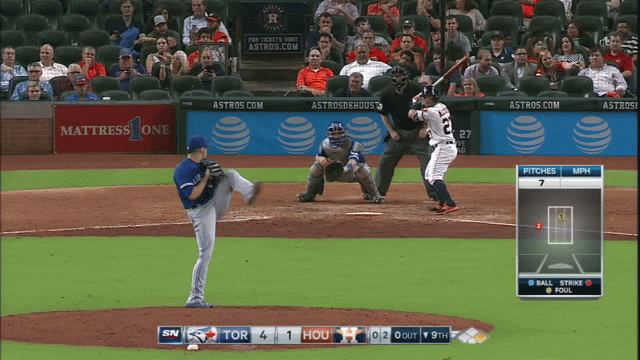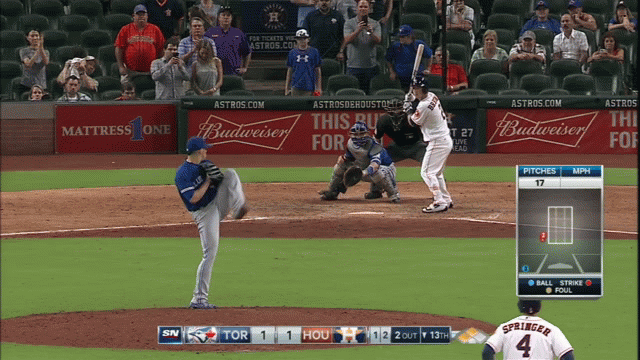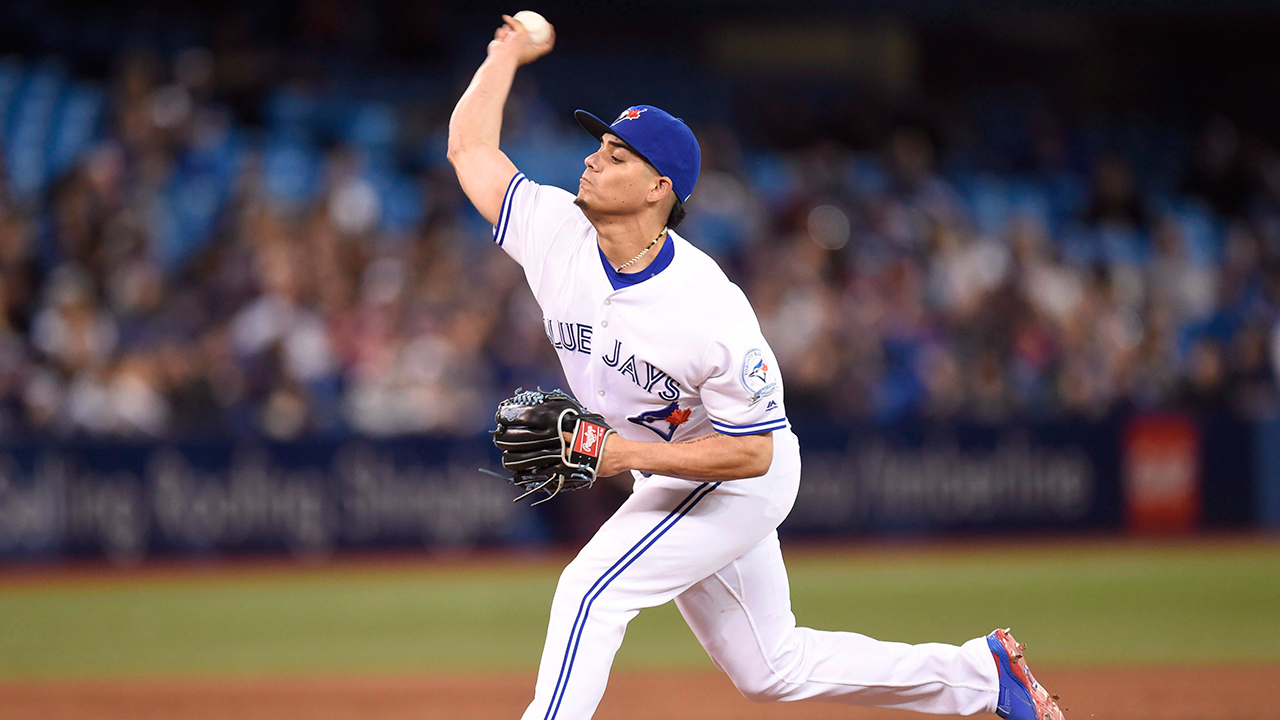Toronto Blue Jays closer Roberto Osuna is a great example of how quickly the unbelievable can become routine.
Last season, the baseball world marveled at how a 20-year-old could take on one of the highest-pressure roles in sports and not only keep his head above water, but instantly excel. One year later, dominance is the expectation and as a result Osuna’s 2016 exceptional campaign has made few waves.
Closers are often evaluated in a binary fashion. They are either “reliable” or “unreliable.” When they enter the games fans are either excited or terrified. The press box is full of writers confidently finishing off their stories or hastily preparing a re-write.
In both of his first two seasons Osuna has been the former, but that doesn’t mean he’s been equally strong each year. Very quietly the 21-year-old has taken a substantial step forward in 2016 and there isn’t a major statistical category where he isn’t better than he was as a rookie.
| Year | K/9 | BB/9 | HR/9 | ERA | FIP | WAR |
|---|---|---|---|---|---|---|
| 2015 | 9.69 | 2.07 | 0.90 | 2.58 | 3.02 | 1.3 |
| 2016 | 11.01 | 1.89 | 0.69 | 1.89 | 2.49 | 1.7 |
How does a pitcher add strikeouts, cut walks and go from a very good closer to an elite one? In Osuna’s case it’s been a matter of getting his opponents to swing the bat.
Hitters facing Osuna have swung at 55.4 per cent of pitches, the highest total in the majors among pitchers with at least 50 innings pitched. Perhaps more importantly they’ve swung at 37.3 per cent of pitches outside the zone the seventh-best total in the same sample of 215 pitchers.
Theoretically, inducing swings isn’t necessarily a positive. Swings can result in outcomes, like home runs for instance, that are far from pitcher-friendly.
When hitters swing against Osuna though, things don’t tend to go well for them. They make contact only 70.4 per cent of the time — well below the league average of 78.4 per cent. If the ball does get put in play it goes for only a .248 average thanks in part to a pop-up rate second only to New York Yankees’ Dellin Betances.
Some pitchers, like Rich Hill, are at their best when they are freezing hitters and making them tentative. Osuna is at his best when he has them hacking. Swing aggressively at his “rising” fastball, hard-breaking slider, or plus changeup at your peril.
The key to executing this game plan for Osuna has been to live by one of baseball’s oldest cliches: the best pitch is strike one. His first-strike percentage of 69.5 is the fourth-best in the game, just behind Clayton Kershaw and ahead of his 2015 mark of 63.1.
When Osuna gets strike one, he gives himself a chance quickly reach a favourable count that will have his opponents flailing. This season he’s managed to reach an 0-2 count with 37.9 per cent of the batters he’s faced. Only Andrew Miller of the Cleveland Indians does it more often.
From that coveted count almost all pitchers are unstoppable, but Osuna just isn’t fair. The young closer has gone 0-2 with 122 hitters in his career, striking out 68 with one walk.
Most relievers have one true strikeout weapon with enough movement to get hitters to expand the strike zone when they get to those 0-2 or 1-2 counts. Osuna has three.
His first choice is usually the slider, which leaves right-handers like MVP candidate Jose Altuve reaching outside the zone.

Against left-handers he can go to a changeup with late movement and a 10 mph gap to his fastball.

Given that he can dial it up to 97 or 98 when needed, the high heat is also always a valid option.

What Osuna is doing is neither complex nor novel. He’s getting ahead of hitters and then forcing them to chase outside the strike zone. It’s the execution, rather than the strategy, that’s extraordinary.
Last season Osuna was a great closer, but a special story. One year in, the story is still a good one, but what’s truly special is what’s he’s doing on the mound.
